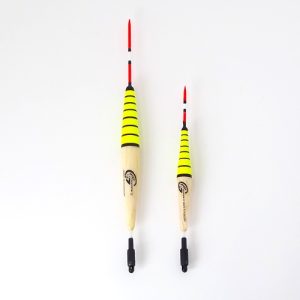Pencil floats, also known as stick floats, are popular tools among anglers targeting species like trout, panfish, and carp. Despite their simplicity, there are plenty of myths surrounding their effectiveness and use. Whether you’re a seasoned pro or just getting started with float fishing, it’s essential to separate fact from fiction. Here, we tackle some common misconceptions about pencil floats and provide the truth behind these trusty tools.
Myth 1: Pencil Floats Are Only for Small Fish
One of the most common myths about pencil floats is that they are only suitable for catching small fish. While it’s true that many anglers use pencil floats when targeting panfish or trout, this doesn’t mean they can’t be effective for larger species. Pencil floats are highly sensitive, making them an excellent option for detecting subtle bites. They can be adjusted for different water conditions and bait sizes, allowing anglers to target a variety of species.
In fact, experienced carp anglers often use pencil floats to present baits like corn or boilies in shallow water. The float’s sensitivity ensures that even the slightest nibble is detected, giving anglers the best chance to hook into larger fish.
Myth 2: Pencil Floats Are Ineffective in Windy Conditions
Another myth is that pencil floats are useless in windy conditions because they’re too light to remain stable. While it’s true that some floats may struggle in strong winds, pencil floats can still be used effectively with a few adjustments. The key is to use the right size and weight for the conditions. Heavier pencil floats or adding a little more weight to the rig can provide the stability needed to keep your bait in the strike zone.
Additionally, using a float with a longer stem can help improve stability in choppy water. This ensures the float sits upright and reduces the amount of movement caused by surface disturbance.

Myth 3: Only One Type of Pencil Float Works for All Situations
Many anglers believe that one pencil float can handle every fishing situation, but this couldn’t be further from the truth. There are different types of pencil floats designed for various conditions. Slim pencil floats are great for calm, slow-moving waters, while thicker, more robust floats are better suited for rougher conditions.
Understanding the differences between pencil float designs allows anglers to match their gear to the water they’re fishing. Picking the right float can mean the difference between missing bites and landing a trophy fish.
Myth 4: Pencil Floats Are Outdated and Inefficient
Some modern anglers shy away from pencil floats, assuming they’re outdated compared to newer float designs or high-tech fishing gear. However, pencil floats remain a staple in float fishing for a reason—they work. These floats are simple, easy to use, and highly effective for a wide range of species and fishing environments.
In fact, many professional anglers still rely on pencil floats for their versatility and sensitivity. Pencil floats are especially useful when finesse is needed, such as in clear or shallow waters where fish are more likely to spook.
Pencil floats have stood the test of time for good reason. Despite the myths surrounding their use, they are highly effective tools that can help anglers of all skill levels. Whether targeting small panfish or going after bigger catches like carp, pencil floats offer precision, sensitivity, and versatility. By understanding how to use them properly and debunking common misconceptions, anglers can add a valuable technique to their fishing arsenal.
Image: gapen





